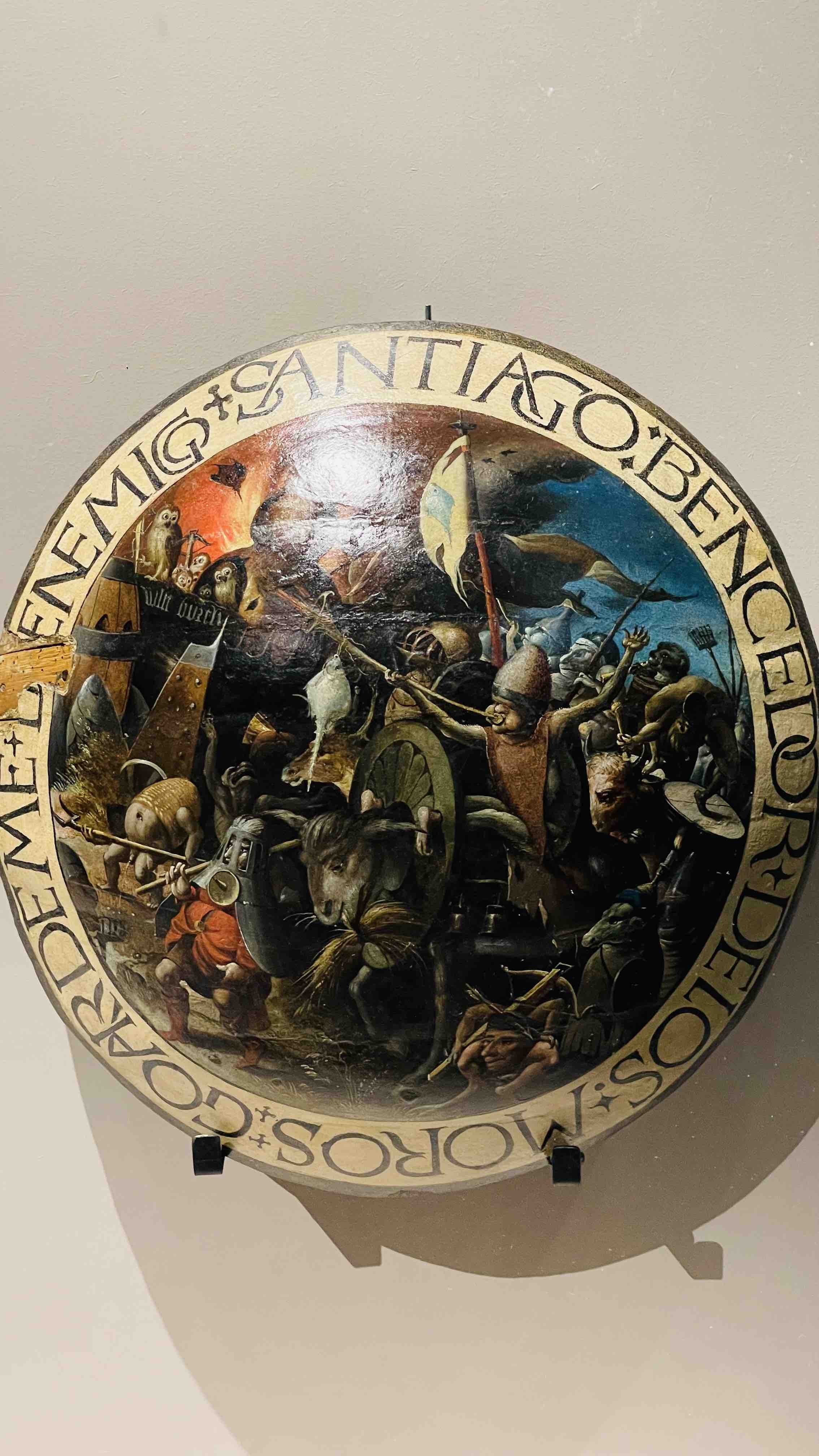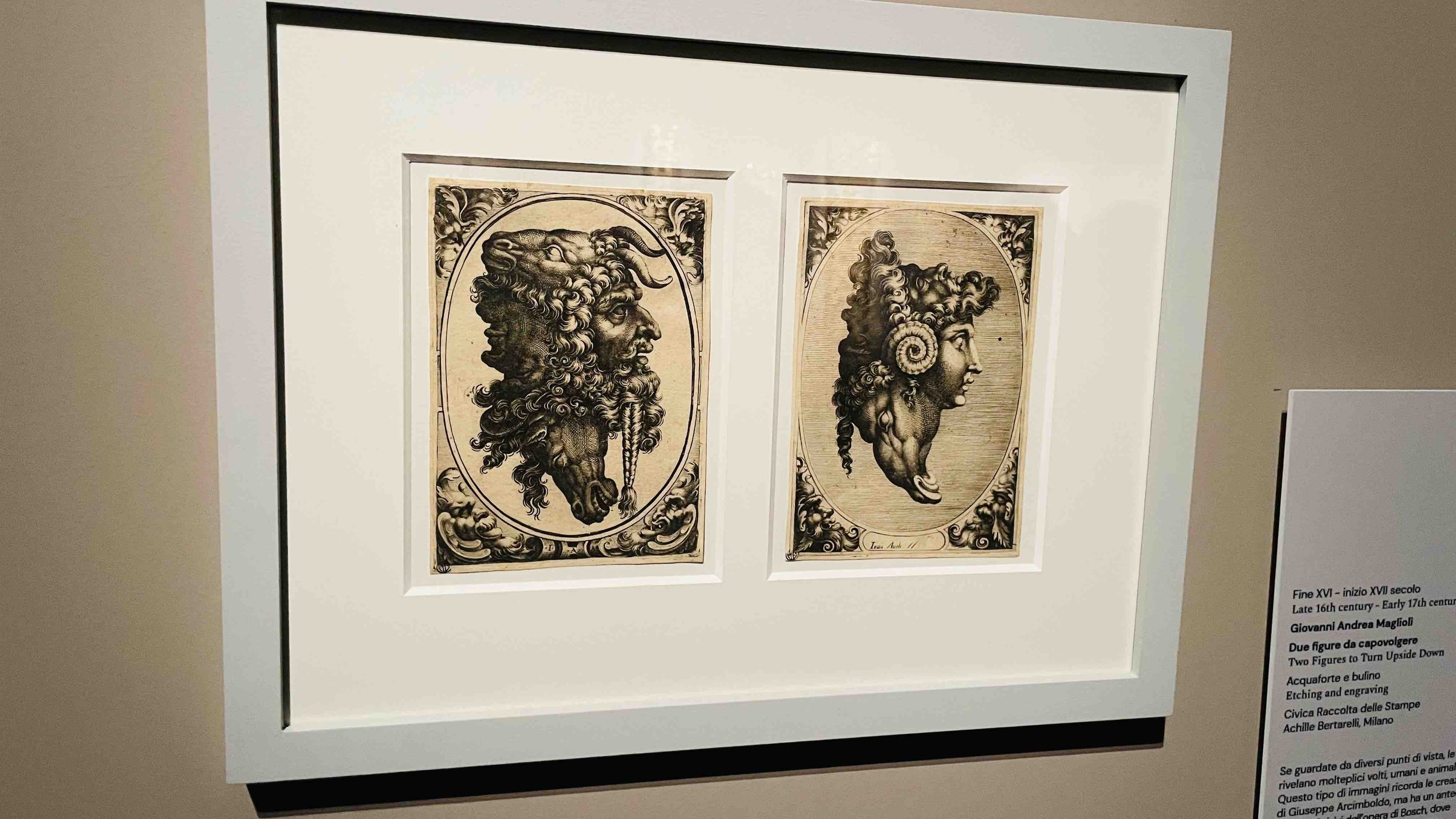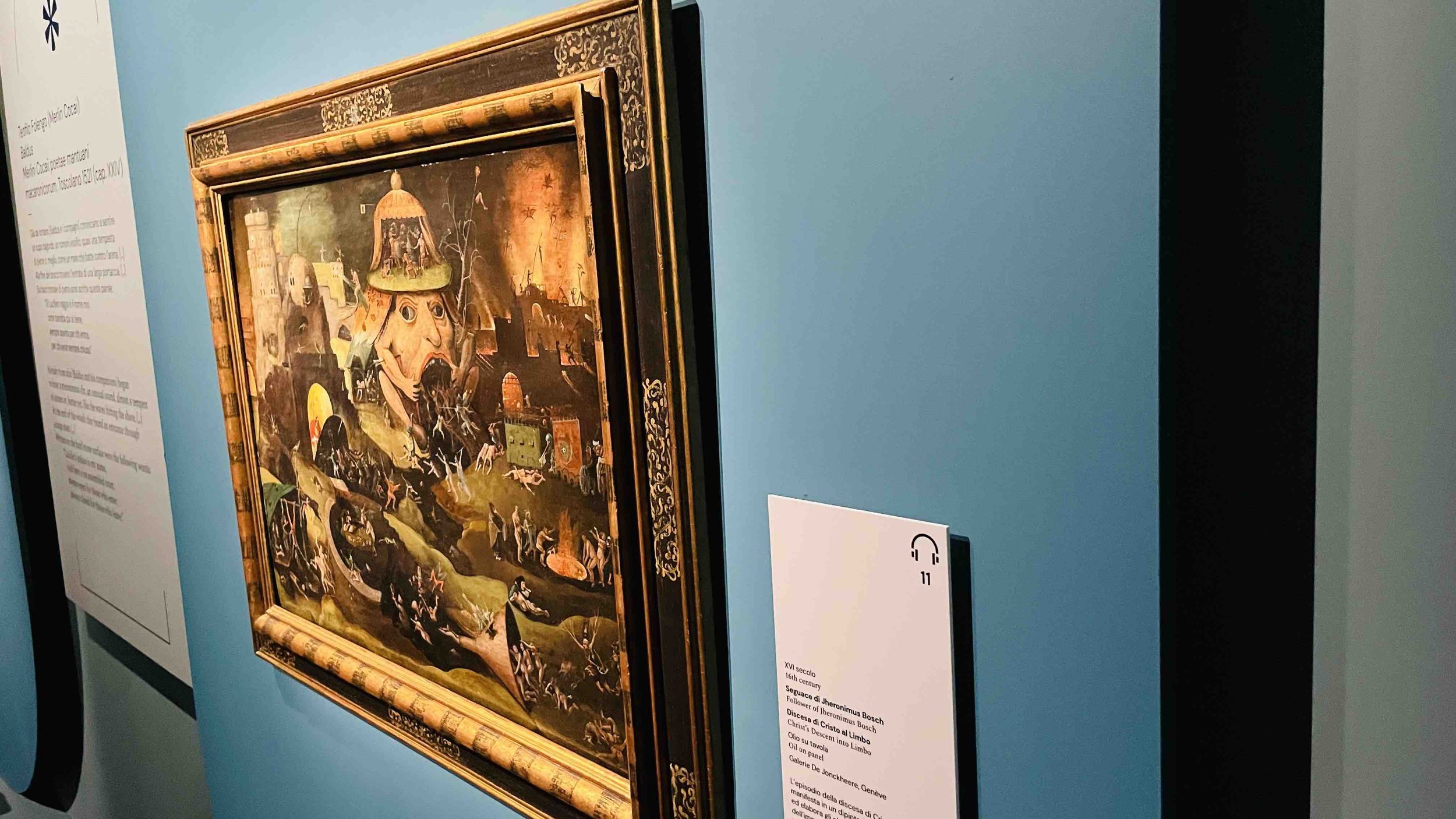Bosch and another Renaissance Milan, Palazzo Reale 9 November 2022 to 12 March 2023
Triptych of the Temptation of St. Anthony, Hieronymus Bosch
Bosch and another Renaissance
Milan - Italy, Palazzo Reale
9 November 2022 to 12 March 2023
Curators: Bernard Aikema, Fernando Checa Cremades and Claudio Salsi
Text author: Roberto Matteucci
Click Here for Italian Version
Pedro Calderón de la Barca was born in 1600 in Madrid to a noble family. He died in 1681 after being appointed chaplain of the Reyes Nuevos. Among the one hundred and twenty comedies written, the most famous is Life is a Dream:
“… For dream we will, though we possess No sense of where it is we thrive And dreaming just means being alive.
The insight life's experience gives Is that, until man wakes, he lives A life that only dreams contrive.
The king dreams he is king and reigns
Deluded in his full command, Imposing order in his land.
The borrowed plaudits he obtains
Blow scattered through the wind's domains
As death-man's life is so unjust! — Transmutes them into ash and dust.
Oh, who on earth could wish to wield Such might when waking means to yield It all to death's dream, as we must?
The rich man dreams his riches great,
Which makes his wealth more burdensome.
The poor man dreams that he'll succumb To misery in his beggared state.
He also dreams who prospers late.
The striver and aspirer do, The mocker and offender, too.
In fact, all mortal souls on earth
Dream their conditions from their birth,
Though no one knows this to be true.
I'm dreaming now that darker days Await me, chained, in this dark cell As I'd dreamt I'd been treated well Of late in some strange coddled phase.
What's life? A frenzied, blurry haze.
What's life? Not anything it seems.
A shadow. Fiction filling reams.
All we possess on earth means nil, For life's a dream, think what you will, And even all our dreams are dreams.”
Living and dreaming coincide. Man dreams until awakening. Dreams are life, and even dreams are dreams.
Jeroen Anthoniszoon van Aken is known for his aesthetic exuberance as Hieronymus Bosch. He was born in Holland on 2 October 1453 and died on 9 August 1516.
It is the phantasmagoria era of the Renaissance. Hieronymus Bosch is a contemporary of the illustrious masters of the elegant Renaissance: Michelangelo Buonarroti, Raffaello Sanzio, Leonardo da Vinci, Perugino.
Why does Bosh have a different language from the latter? Yet they are in the same world.
With a scientific and meticulous method, these two divergent humanities are contained in the exhibition Bosch and another Renaissance, held in Milan, Palazzo Reale from 9 November 2022 until 12 March 2023. The exhibition is curated by Bernard Aikema (full professor of History of Modern Art at the University of Verona), Fernando Checa Cremades (former director of the Prada Museum, currently professor of art history at the Universidad Complutense de Madrid) and Claudio Salsi (superintendent of the Castello Sforzesco, Archaeological Museums and Historical Museums of the Municipality of Milan, curator of exhibitions).
In his work, Hieronymus Bosch creates repulsive, deformed creatures and objects. A horrifying and gruesome dreamlike evocation.
His visions have a satiric background with an interpretation that is both political, social and above all religious.
Vertumnus by Giuseppe Arcimboldo
The deformation of reality, the graphic creation of altered characters in absurd poses, bizarre and unreal objects had already contaminated the art environment, such as the chambers of wonders, the Wunderkammer, the mythical museums of Rudolf II in Prague. The link is in the painting Vertumnus by Giuseppe Arcimboldo, which is also on display.
Hieronymus Bosch reports violent, erotic scenes, torture, fires with allegory and distraction. He follows his time, a classic tradition. Other authors are exposed to demonstrate Bosh's non-exception. His style was current, so there are paintings by Leonardo da Vinci, Pieter Huys, Jan Brueghel the Elder, Pieter Stevens the Younger, Albrecht Dürer, Benvenuto Tisi known as Garofalo, Bernardo Parentino, Giuseppe Arciboldo.
Historical satire has a moral scene based on intelligence, liltingness, and evil.
The dream reappeared in the twentieth century. The age of Enlightenment discredited the imagination due to the alleged superiority of rationality. In the twentieth century, thanks to the methodical and scientific Sigmund Freud's study, the dream exploded into many facets. The dream is subconscious, and culture devours this aspect in multiple forms and styles.
Nowadays, beasts and monsters are trendy and the Palazzo Reale exhibition is an artistic and public success.
His horrors have crossed species, from animals to human beings. Saint Anthony resisted the tempting both ones pleasant and ones frightening, ones disgusting and threatening beings. No one sees them, just a powerful artist who can reveal nudes, asses, sexual allusions committed to instigating the virtues of the saint.
For Freud, the dream is subconscious, a psychological desire. Non-acceptance causes dissimulation by changing dreams suddenly and unequivocally. They become images without apparent significance.
Triptych of the Temptation of St. Anthony, Hieronymus Bosch (particular)
This is Hieronymus Bosch's fortune. In front of his images, we are searching for hidden meanings. What is the significance of a piece of body with a dagger pierced in the butt? Or a table, with wine and food, supported by people with his feet and hands? Only Saint Anthony can recognise this, but from his gaze he too appears doubtful.
Hieronymus Bosch overcomes the imaginary by taking up naturalistic details, even if they are dragons and orcs. His contemporaneous artists are Michelangelo, Raffaello Sanzio, Leonardo da Vinci, Perugino. They embodied absolute and supreme beauty, while Hieronymus Bosch represented the Alternative Renaissance.
The Alternative Renaissance is suggestive but the iconography is less rigorous, dictated by individual choices. After all, apparitions are personal and everyone identifies their own.
Pedro Calderón de la Barca comes back:
“What's life? A frenzied, blurry haze.
What's life? Not anything it seems.
A shadow. Fiction filling reams.
All we possess on earth means nil, For life's a dream, think what you will, And even all our dreams are dreams.”
Even the Hieronymus Bosch's paintings are a dream.
Credit photo: popcinema.org
Bibliography:
Pedro Calderón de la Barca, Life is a Dream, original title La vida es sueño, Penguin Books, 2006
Exhibition catalogue Bosh e un altro Rinascimento, curated by Bernard Aikema, Fernando Checa Cremades, Claudio Salsi, texts by Bernard Aikema, Fernando Checa Cremades, Claudio Salsi, José Juan Pérez Preciado, Carlotta Striolo, 24ore Cultura














































The artworks in Italy are in an excessive number. The consequence is the invisibility of the majority of works preserved in museums.
The deposits in which they are kept are vast. This causes a problem with cataloguing and studying cultural heritage. Above all, it is unavailable to the public.
The Galleria Nazionale delle Marche in the Ducal Palace, Urbino, with the exhibition, The other collection. Stories and works from the deposits of the National Gallery of the Marche, offered the opportunity to see sixty paintings usually in the deposit.